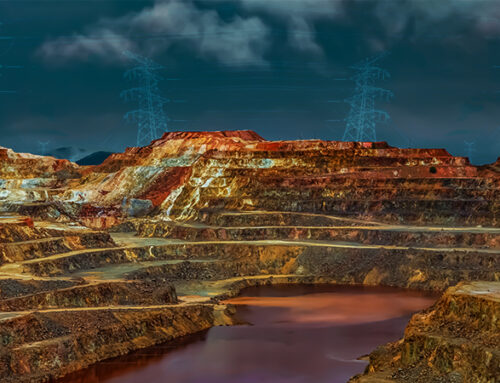In the second article in my series on energy storage, I explore the area of thermal energy storage (TES), which involves the collection of excess thermal energy for later use. This and can be achieved through a range of technologies, at an individual building, district or even regional scale. The technologies fall into three broad categories:
- Sensible heat storage based on heating or cooling solid or liquid media such as water, sand, molten salts, or rock;
- Latent heat storage involving changing the phase of materials eg from a solid to liquid state; and
- Thermochemical storage which uses chemical reactions to store and release thermal energy.
With just under half of the UK’s energy consumption going on heating, the idea of thermal energy storage combined with renewable generation could be an important factor in the decarbonisation of the energy market.
Sensible heat storage
A “sensible” heat storage process is one that can be sensed by a change of the temperature. There are a large number of thermal storage installations globally based on the heating and cooling of various solid or liquid media. At the domestic level, ground-source heat pumps involve the circulation of water and anti-freeze through buried pipework to extract thermal energy from the surrounding soil and rock.
On a district level, projects such as the 52-home district heating system at Drake Landing in Canada involves seasonal storage of water heated through rooftop solar collectors being stored underground for use in winter. A similar project in Denmark covers 1400 buildings.
These schemes can require a large amount of physical space, which can affect their suitability, and their efficiency can be undermined if the buildings being served are not well insulated, as is the case with much of the existing UK housing stock.
Outside the UK, where district heating (or cooling) schemes have a longer history, local infrastructure has grown up with them, and schemes are starting to switch from fossil-fuels to renewable energy sources. Schemes are also seeking efficiency gains, for example by using buildings themselves for heat storage, or adopting advanced thermal insulation coatings such as those used at the innovative TES scheme at the Department of General Services in Sacramento, California which provides chilled water for cooling, steam for heating, and control air to 23 buildings (shown in the main image for this post).

At the grid-level, molten salts are used for storing heat at high temperatures and can be used in conjunction with concentrated solar power. Such schemes can delivery utility-scale energy solutions, such as the 110 MW facility at Crescent Dunes in Nevada, which has 10 hours of full load storage, enabling on-demand energy production day and night. There are similar projects at Postmasburg in South Africa (100 MW) and Copiapó in Chile (260 MW). Such schemes have greatest potential in scarcely populated, hot areas where solar capacity is greatest and space is not constrained.
Latent heat storage
Unlike sensible storage processes, latent heat storage depends on the change in phase of the storage material eg from solid to liquid state, which occurs at constant temperature. Various thermal storage systems take advantage of the high specific heat capacity of water (the amount of energy required to heat water is relatively high at 4200 J/kgK), and in particular, air conditioning systems that use off-peak electricity to freeze water into ice, which is used for daytime cooling can be economically efficient. Ice-storage systems have been deployed worldwide, with about 1 GW installed in the US, and various projects in Asia.
US-based Ice Energy has been developing solutions that combine solar power with ice storage to provide an alternative to solar + battery storage, finding that it can be cost-competitive (although not necessarily be very much) in areas with high air-conditioning needs (where peak cooling requirements coincide with the evening reduction in solar output).

Highview Power Storage in the UK is developing a cryogenic storage system using liquid air. Off-peak electricity is used to cool and liquify air, which is stored in tanks at low pressure. Power is recovered when the liquid air is re-gasified and used to drive a turbine. The system was successfully piloted at SSE’s 80 MW biomass plant in Slough in the UK 2011-2014.
Phase-change materials (“PCMs”) can be organic, inorganic or mixed (eutectic) materials. Organic PCMs are chemically stable and have a high latent heat, however they are expensive and have low energy density (and are often flammable), whereas inorganic PCMs, while cheaper, are prone to chemical instability and can corrode their containers. Eutectic PCMs are expensive – typically 2-3 times more costly than organic or inorganic PCMs.
For heating systems, the temperature at which the phase change occurs must be within a comfortable range, limiting the number of suitable materials. Water, for example is generally unsuitable for use as a PCM for heating as the freezing point is zero degrees Celsius, which is cold! It is however appropriate for use in cooling systems.
It is also more efficient for solar-powered systems if the temperature at which the phase change occurs in line with day-time/night-time temperature changes. Sodium sulphate melts at 32oC, which is close to typical summer temperatures, and slightly higher than the comfort range of about 24-28oC, meaning it could be suitable as a PCM for heating systems.
As with sensible storage systems, latent heat systems also involve significant space requirements for housing the storage media, which can limit their practical use.
Thermochemical energy storage
Thermochemical storage uses reversible chemical reactions to store heating or cooling capacity in the form of chemical compounds. Energy is stored via endothermic reactions (chemical reactions which absorb heat) and released in exothermic reactions (chemical reactions which emit heat), achieving energy densities 5 to 20 times greater than sensible storage. The most common type of reaction used for this process is the hydration of salts – the storage system is charged by the endothermic thermal dehydration of the respective higher hydrated salt, and discharged by exothermic re-hydration.
Thermochemical energy storage is less advanced than sensible or latent heat processes, however, there has been significant research into this technology, including an EU-funded project in Germany which demonstrated two separate concepts, using calcium hydroxide and manganese oxide. A recent study concluded that calcium carbonate processes have the most experimental support and should be attempted at a research plant scale, while the manganese oxide cycle, while less developed, could be a suitable application for desert climates.
Not quite there yet
Various types TES systems have been deployed around the world, but whilst it shows some promise, the technology has yet to truly break through to the mainstream, in fact, the global market is only forecast to reach US$ 1.8 billion by 2020, compared with the market for battery storage which is projected to be US$ 1.7 billion in the US alone in 2020, and US$ 400 billion globally by 2030. The challenges are summarised well in the 2014 report into TES by UKERC:
“Provision of heat in the transition to a low carbon economy is a significant challenge. Heat networks currently supply less than 2% of the UK’s space heating compared to approximately 16% in Germany. Heat networks allow large scale storage systems to be used that provide efficient storage and effective load shifting capability; expansion of heat networks in the UK is possible in areas of high heat demand although cost of installations is high at present. If the electricity supply is decarbonised, combined heat and power will no longer be the lowest carbon option and large MW-scale heat pumps may prove preferential.
The wide-scale adoption of air source heat pumps for space heating will require significant investments due to the seasonal variation and magnitude of peak winter loads. Strengthening of the low voltage electrical network and significant additional generation capacity will be needed in addition to major building refurbishment to reduce heat loads. Distributed thermal energy storage can provide a significant load shifting capability on a diurnal basis. However, without the development of effective latent or thermochemical heat storage systems, the storage volumes required will be large and difficult to integrate into existing domestic dwellings.”






Decarbonising domestic heating will be a major undertaking in the UK. What matters most is the cost of each storage methods. My gut feeling is that distributed sensible thermal storage using resistive heating and cheap solid materials to store the heat. In effect, storage heaters. It would seem perfectly possible to update the technology from 1960s storage heaters with better insulation and distribution systems. Political decisions will be harder as would seem likely that gas for domestic heating will need to be taxed to subsidise renewable electricity generation to power the domestic storage systems
Perhaps we could revisit thermal energy storage.
Siemens-Gamesa looked at replacing coal fired steam generation with such storage – using Basalt (I think) rocks at the comparatively low temperature of 600 degC.
Higher temperature would enable its application to gas turbine systems – with an increase in (thermodynamic efficiency) and, if using a closed cycle gas turbine bottomed by steam turbines would reduce costs and improve life of the gas turbine.
Though increasing the working temperature to (say) 1800 degC would reduce the cost of storage (to a third) .
https://www.pv-magazine.com/2023/02/18/weekend-read-a-long-time-coming/ ““lack of a commercial market for large scale storage.””. Disappointing; but I am not sure how much better higher temperature or refractory bricks might improve the commercial case Is the market set up in such a way that there is not a way to support intermediate term storage (and only short term battery storage is supported).
How costs are bundled for the auctions eg cost of transmission as well as costs of production.
It does seem that domestic systems might be good – and, especially at higher temperatures, able to generate electricity – with waste energy being used as heat; however the cost of small gas & steam turbines is an unknown; certainly there is a growing appreciation of the need and use of high performance vacuum insulation – though I am not sure how well manufacturing costs are managed.
PS Perhaps it should be notes that thermal energy storage helps the responsiveness of nuclear power stations and is an active topic
I agree. There are two aspects though. Industrial, where high temperature storage can be used directly for Industrial uses and for generation and also storage in the home with technologicay proven systems that store at 600C and use conventional wet central heating radiators.
I agree. There are two aspects though. Industrial, where high temperature storage can be used directly for Industrial uses and for generation and also storage in the home with technologicay proven systems that store at 600C and use conventional wet central heating radiators.